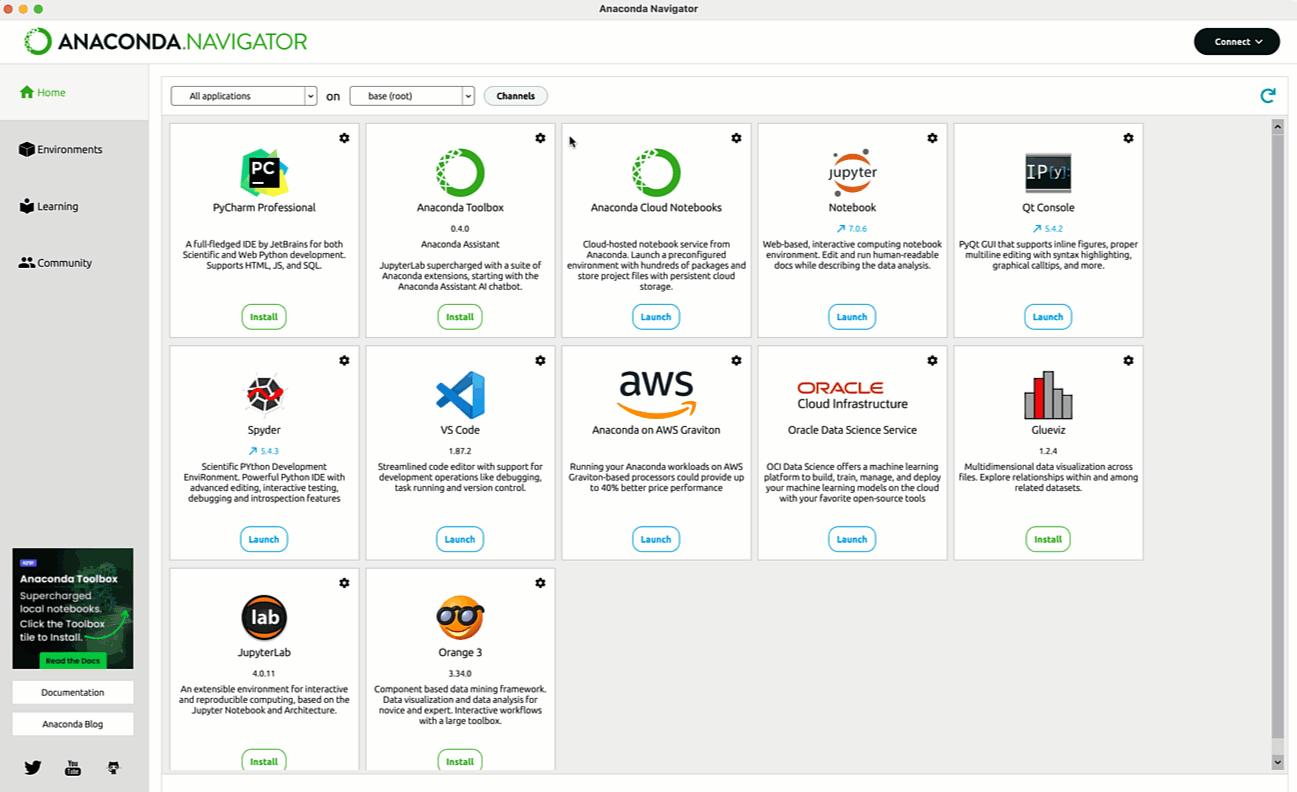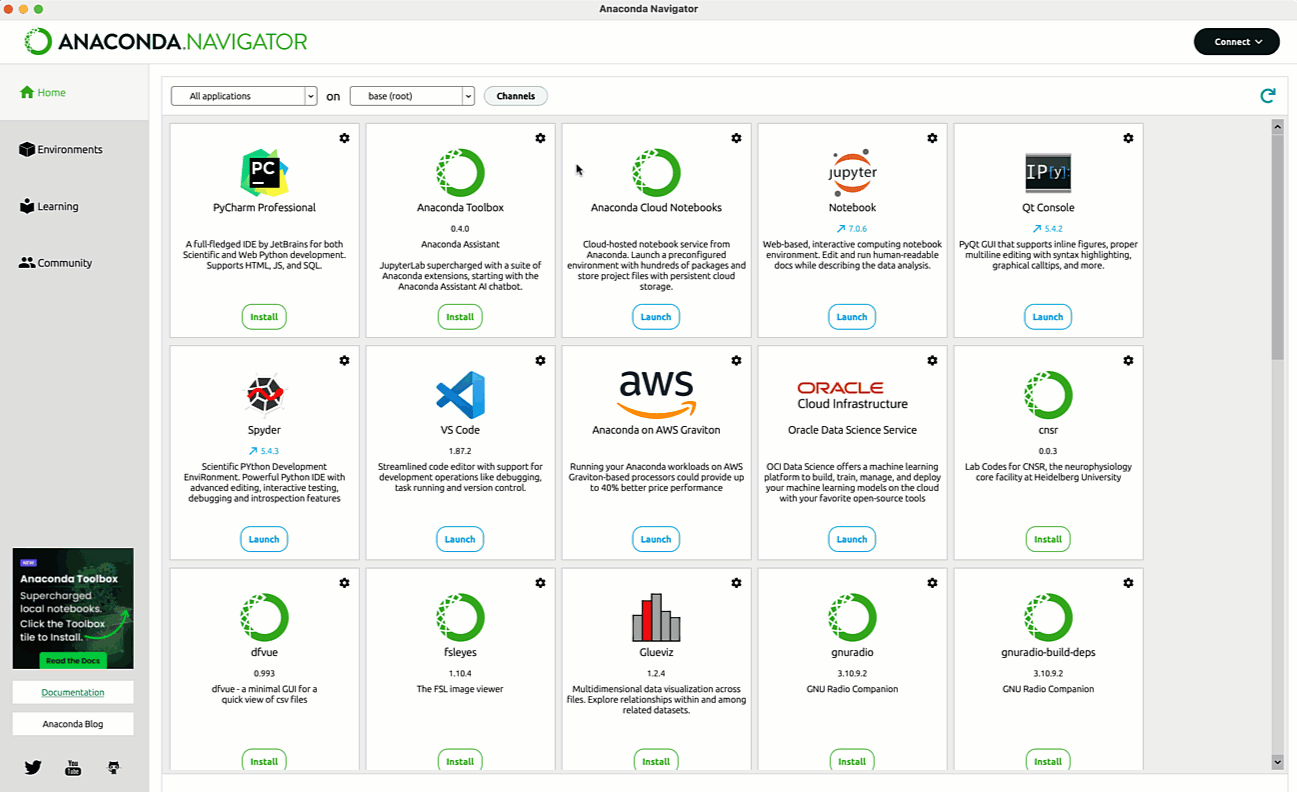conda looks for, downloads, and installs . Navigator is capable of connecting to a few important conda package hosting providers— Anaconda.org, Anaconda.com, and Anaconda’s enterprise on-prem Package Security Manager—in order to access channels. Navigator can also connect to individual channels that are privately hosted or saved in your own computer files.
When managing channels in Navigator, you can refer to a channel either by its full URL or by its name. For example, let’s say you want to look for packages on the “conda-forge” channel of Anaconda.org. Either of these channel variations will look for packages in the same place:
- By name:
conda-forge - By URL:
https://conda.anaconda.org/conda-forge
Referring to a channel by its name requires that the channel alias be set. By
default, it is set to
https://conda.anaconda.org/. For more information
about channel aliases, see channel_alias: Set a channel
alias
in the conda documentation.Adding a channel in Navigator
To add a premium channel to Navigator with the channels manager, you must either supply the inside the URL (
https://repo.anaconda.cloud/t/<TOKEN>/repo/<ORG-NAME>/<CHANNEL>) or be connected to the Package Security Manager (Cloud) organization that contains the channel.- Click Channels to open the channels manager.
-
Click Add.

-
Enter the channel name or URL and press Enter (Windows)/Return (Mac).
URLs must begin with
https://when entering them into the channels manager. - Click Update channels.
Adding a channel in your .condarc file
Since Navigator is built on the conda , you can also add channels to navigator using conda’s configuration file:.condarc.
-
To open the
.condarcfile in Navigator, open Preferences and then click Configure conda. For more information on editing configuration files, see Editing Navigator and conda configuration files. -
To add channels in the
.condarcfile, list them under thechannels:setting, similar to the following example:
Navigator searches the channels list in order, starting at the top.
.condarc file, see Using the .condarc conda configuration file and Settings in the conda documentation.
Deleting a channel
- Click Channels to open the channels manager.
- Click Delete beside the channel name.
- Click Update channels.
